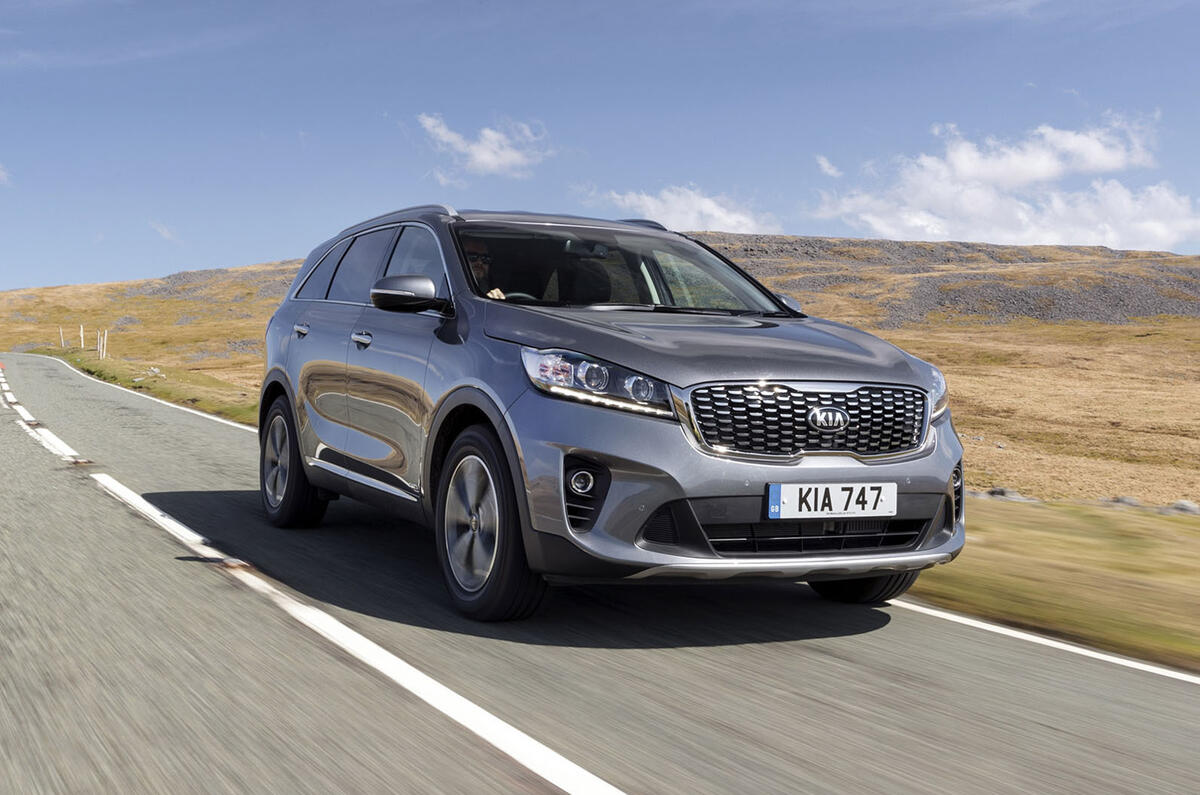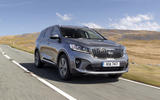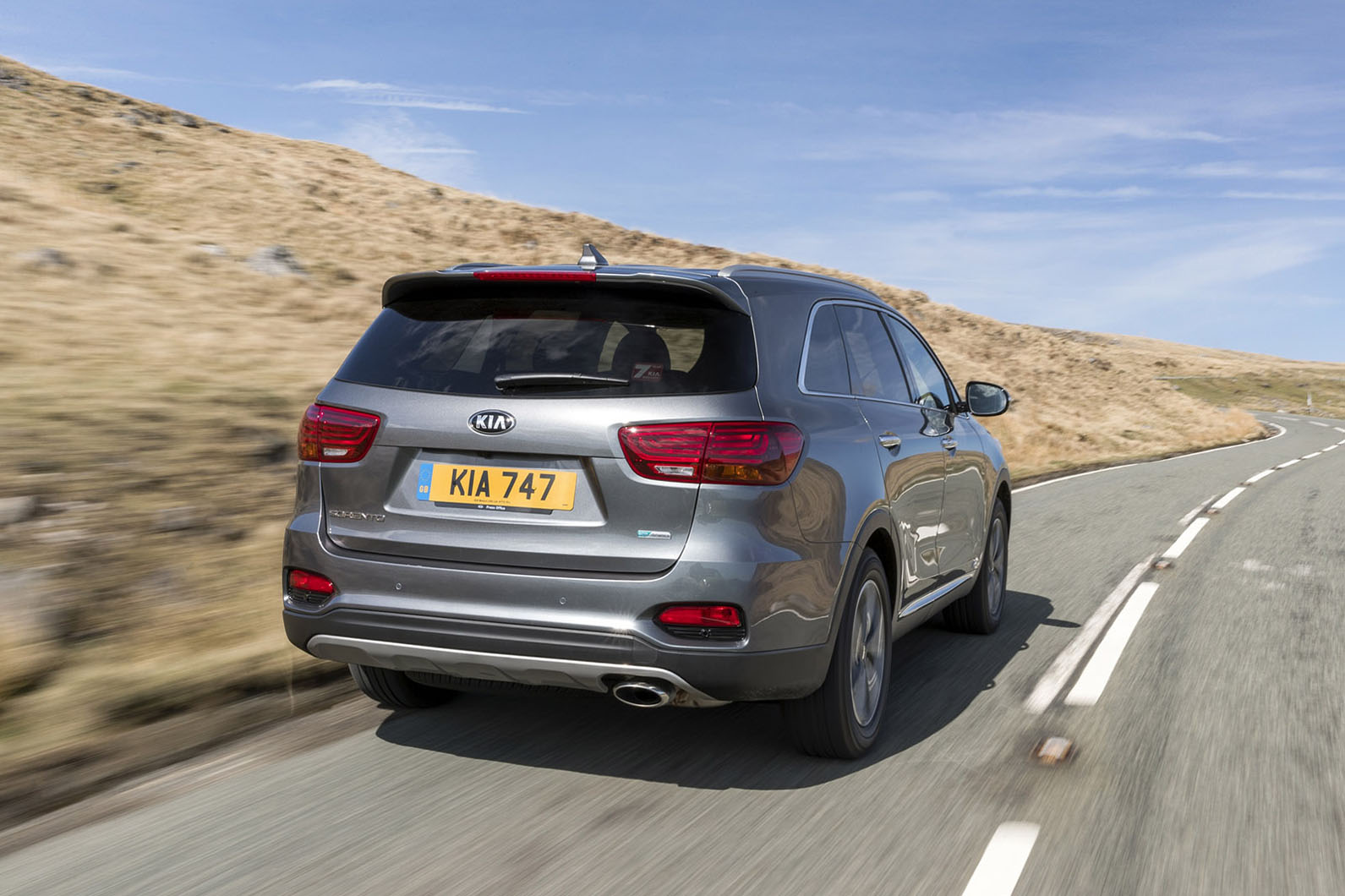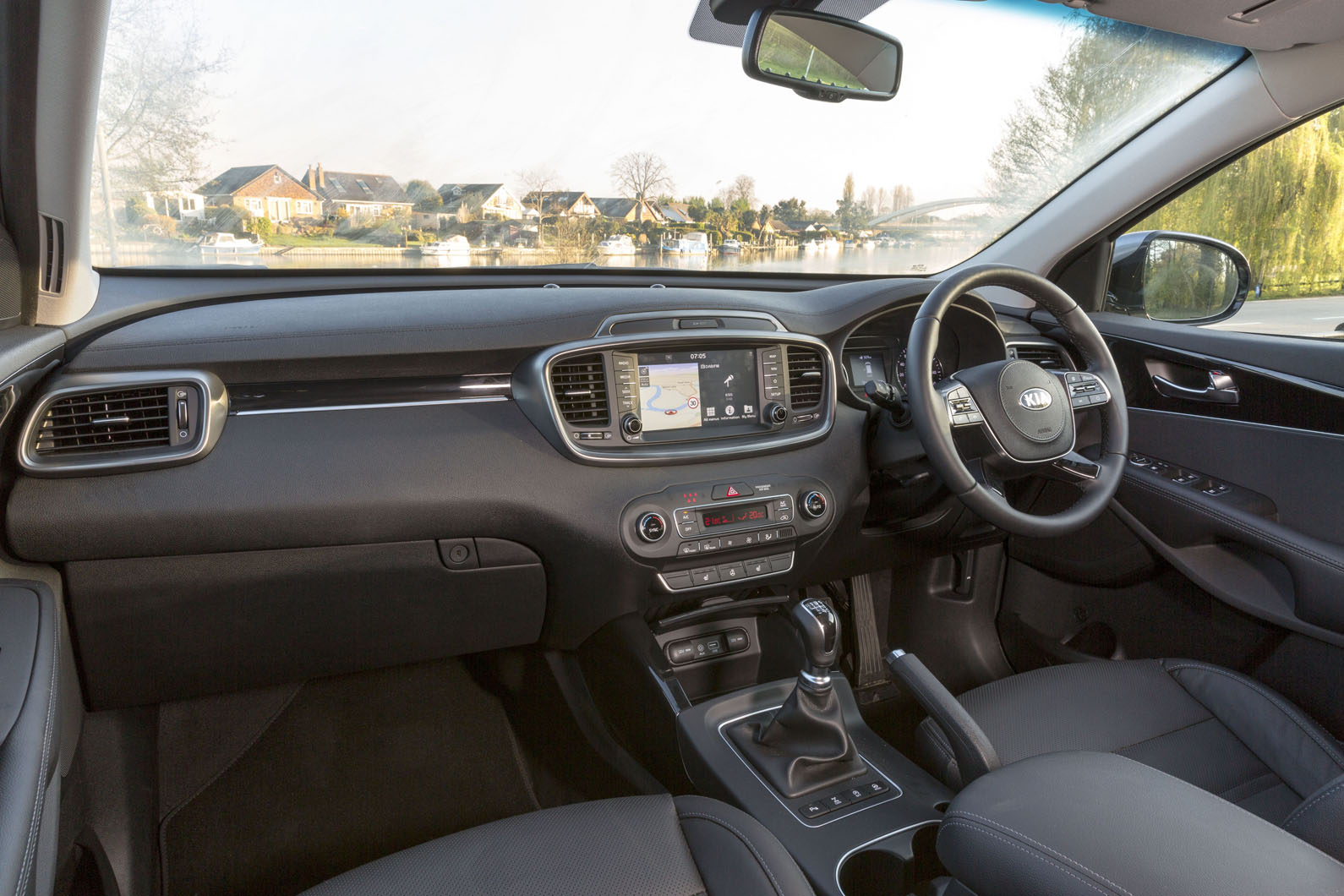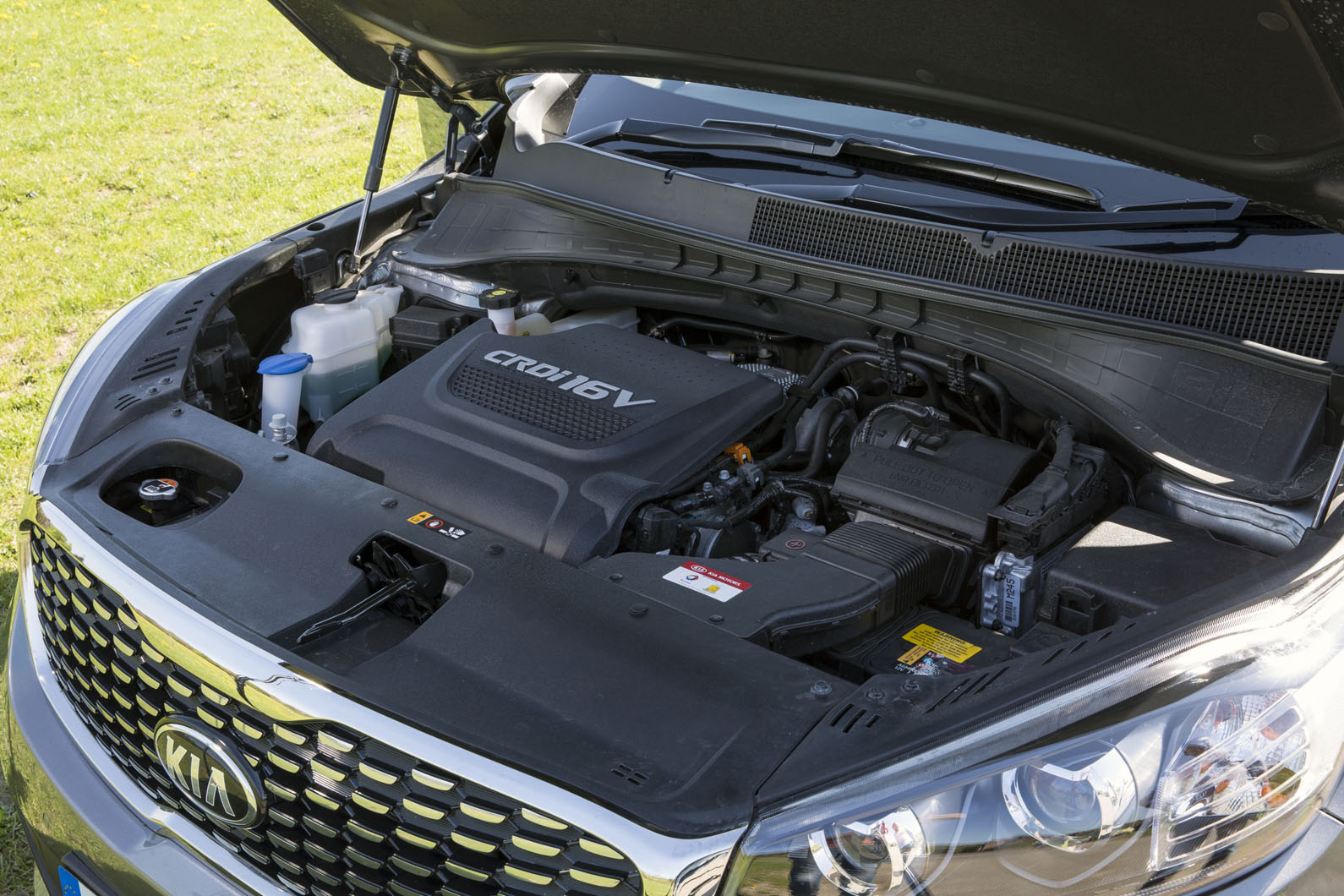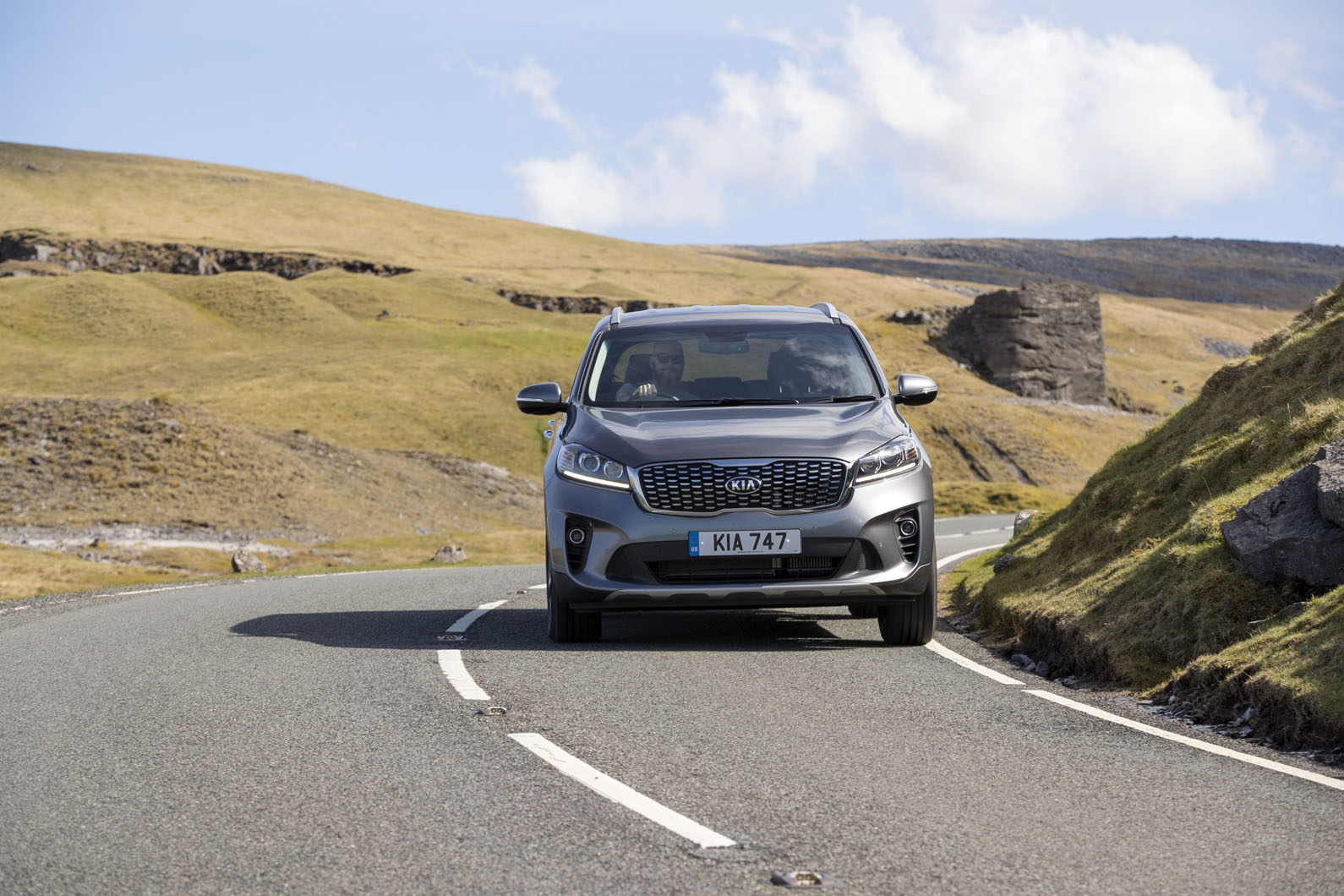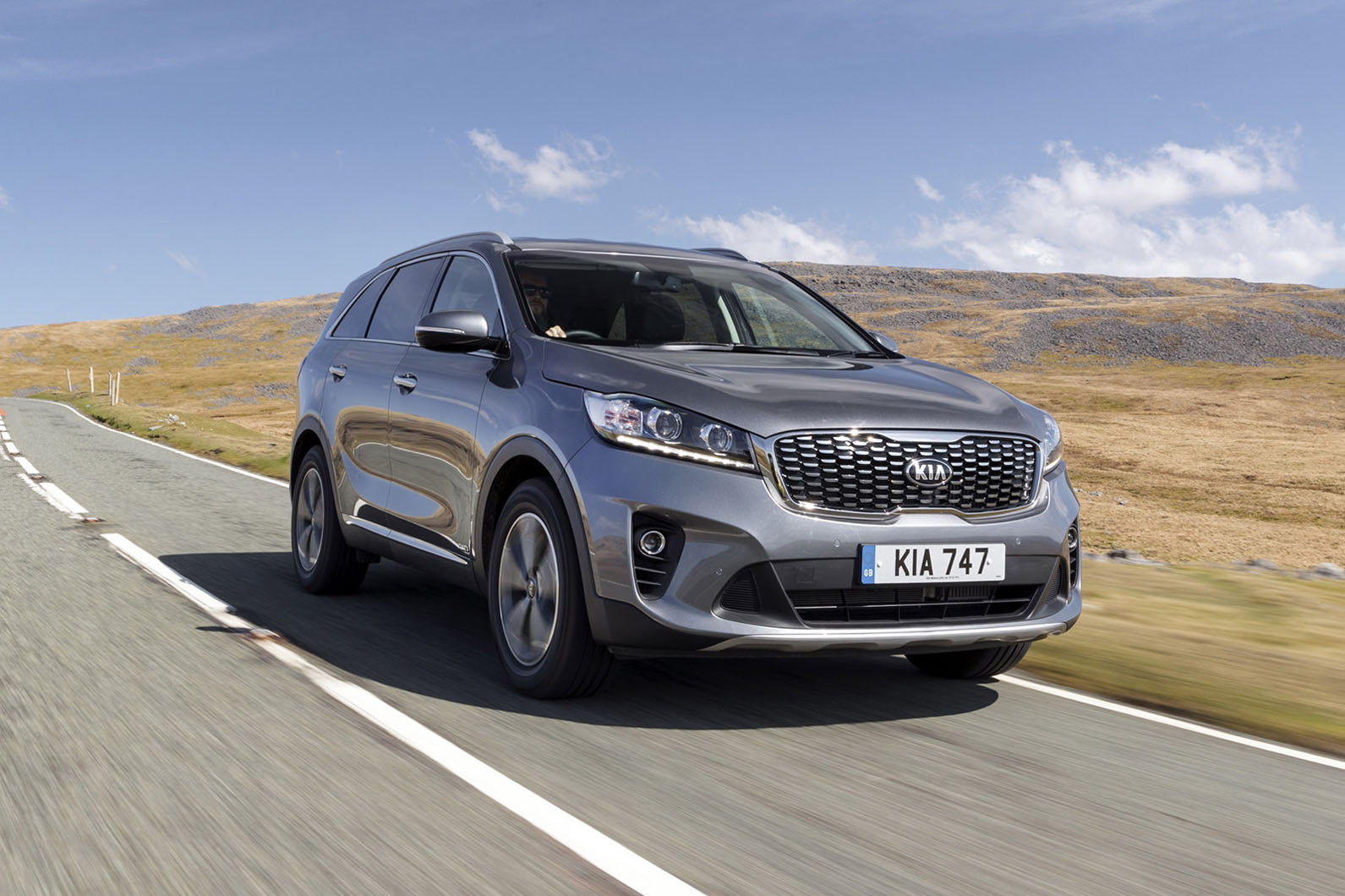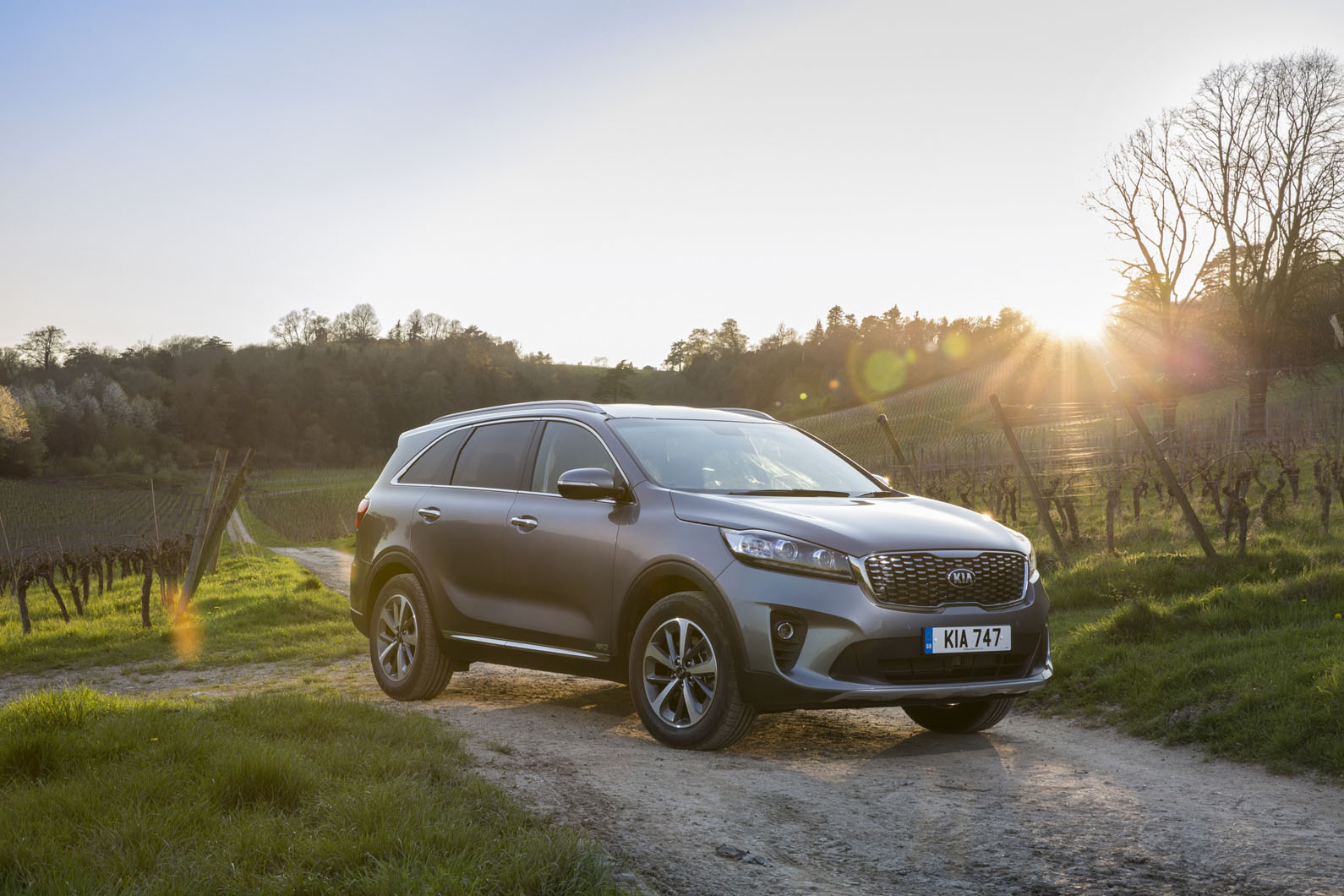Four trim levels are available, ranging from entry-level KX-1 up to the halo KX-4. As standard, the entry-level Sorento gets 17in alloy wheels, rear parking sensors, privacy glass, rear spoiler and roof rails on the outside, while inside there is manual air conditioning controllable from the front and rear of the cabin, Bluetooth connectivity, DAB radio and cruise control.
Upgrade to the KX-2 trim adorns your Sorento with 18in alloys, a leather upholstery, front and rear heated seats, parking sensors, self-levelling suspension, dual-zone climate control and Kia's 7.0in touchscreen infotainment system complete with sat nav and a rear-view camera. While the KX-3 adds xenon headlights, panoramic sunroof, electrically adjustable driver's seat, lane departure warning and an 8.0in touchscreen system.
Topping the range is the KX-4 trimmed Sorento, which comes with luxuries such as 360-degree camera, adaptive cruise control and headlights, ventilated front seats and blind spot detection as standard.
Kia's touchscreen icons are large and easy to hit, and the generous provision of shortcut keys on either side of the screen saves you getting lost in menus. Sound quality from the audio system was adequate but not outstanding for a premium system.
With a slightly lower hip point than that of the previous Sorento, the new one should allow most people to slide straight in without needing to climb up or drop down into the driver’s seat.
Big, pudgy front seats, plentiful kneeroom and well-placed support for your elbows make you instantly comfortable, although very tall people will be aware of slightly limited head room in the first and second rows.
The fascia is generously covered in soft-touch plastics, with glossy piano black trim and satin chrome accents for decoration. The cabin ambience is dark, somewhat restrained and lacking a bit of warmth. Although the materials chosen could appeal more to the senses, their robustness and consistency is apparent.
The car certainly betters Kia’s prevailing standard on fit and finish. Some would say what it needed to do more urgently was bring greater sophistication and richness to the party.
The layout of instruments, major controls and secondary systems is very conventional so things are precisely where you expect them to be and most processes – turning up the climate control temperature, turning off the parking sensors or changing the navigation map orientation – are easy and intuitive.
Our test car had Kia’s TFT instrument screen fitted, but it only occupies the place of the car’s central speedometer and feels more like a modern trip computer with some extended menus than a truly configurable TFT-style display.
Further back in the car, occupants will find lots of space in the second row (head room apart) and a large, square boot with a convenient loading height. The third row of seats is relatively easy to put up, the load bay cover stowing in its own recess below the boot floor and the seats clicking into place at the tug of a belt tie.
Access to the third row could be better, since the second row of seats slides fore and aft but doesn’t tumble forwards. But once they’re in, passengers will find as much room back there as in most seven-seaters (enough for the smaller adults in your number) and they have their own air conditioning vents and controls.


